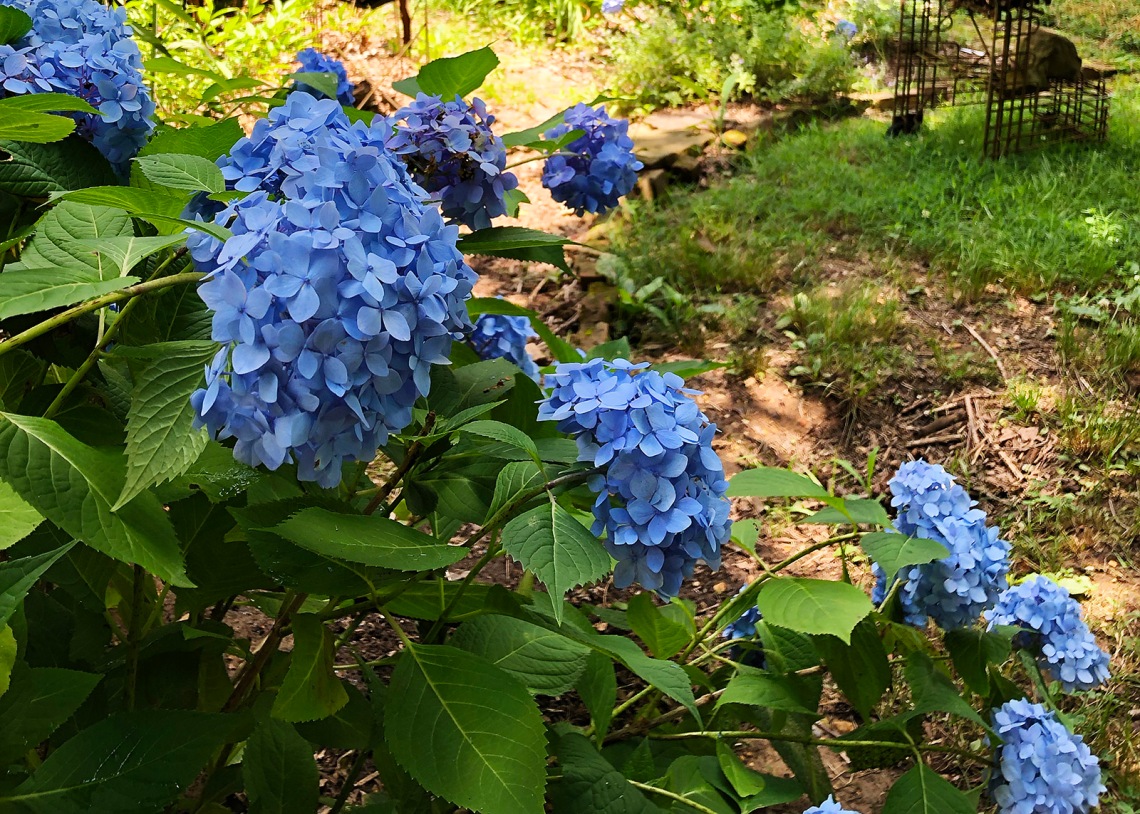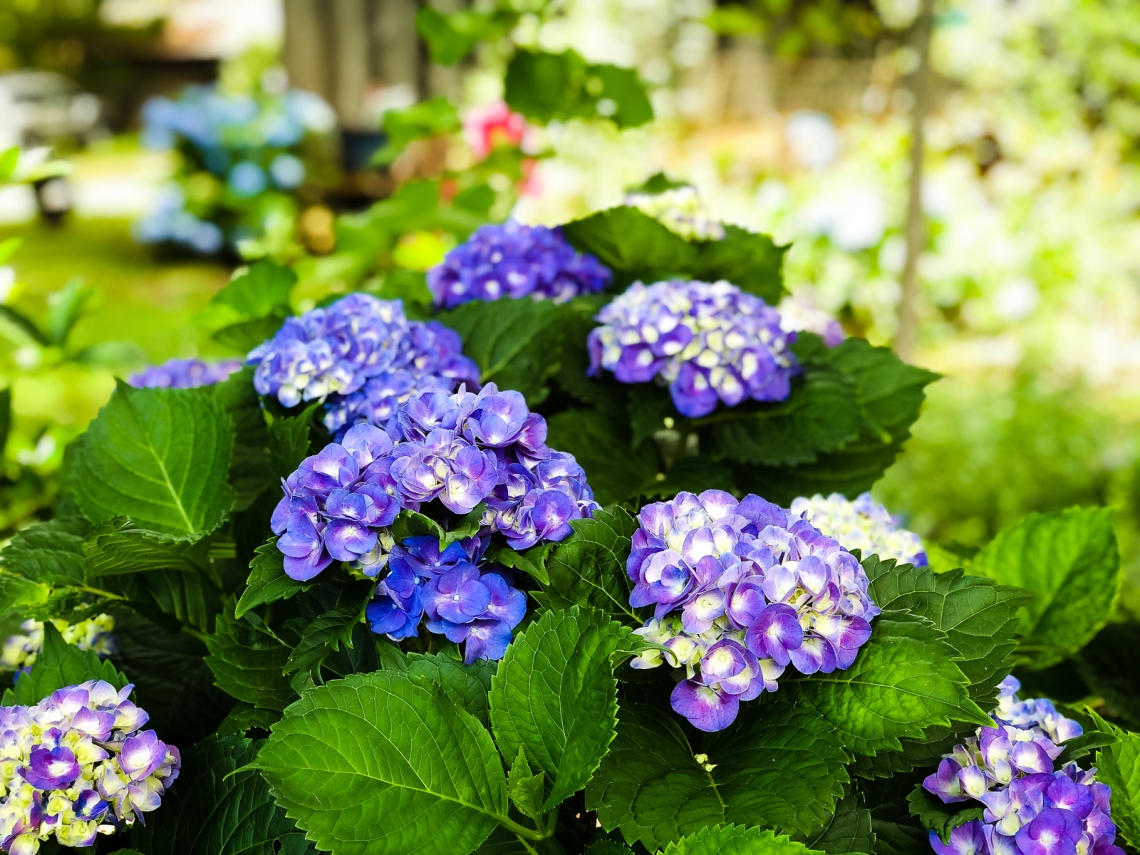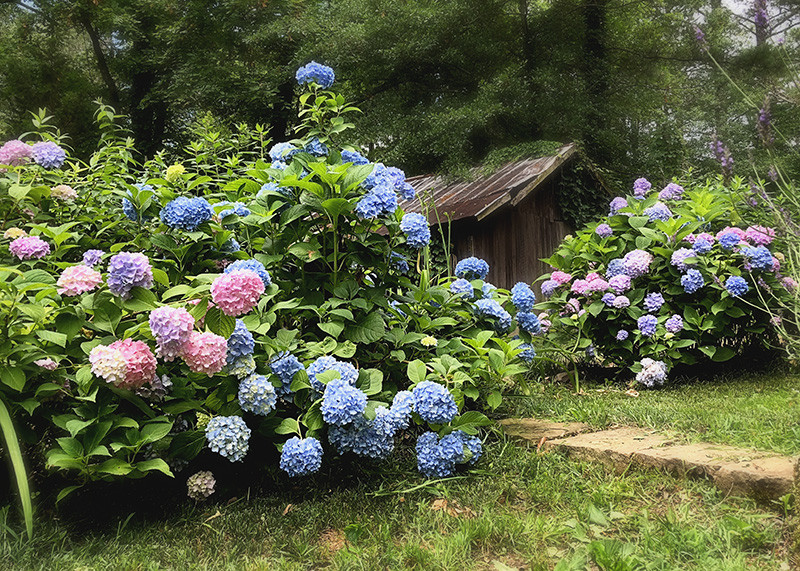
Beloved, thou hast brought me many flowers
Plucked in the garden, all the summer through
And winter, and it seemed as if they grew
In this close room, nor missed the sun and showers,
So, in the like name of that love of ours,
Take back these thoughts which here unfolded too,
And which on warm and cold days I withdrew
From my heart’s ground. Indeed, those beds and bowers
Be overgrown with bitter weeds and rue,
And wait thy weeding; yet here’s eglantine,
Here’s ivy!— take them, as I used to do
Thy flowers, and keep them where they shall not pine.
Instruct thine eyes to keep their colours true,
And tell thy soul, their roots are left in mine.
–Elizabeth Barrett Browning, Sonnets from the Portuguese
Much of my garden is “passalong plants” that I have received from other gardens in other places. Each plant represents a person, a fellow gardener, a family member, a vacation, a birthday gift…
Sharing plants is an especially strong tradition in the South, whether you trade with your next door neighbor or attend an organized plant swap. They get handed down from generation to generation. Varieties, and even species are sometimes unknown to the gardeners, but the plants are beloved nonetheless.
Passalong plants sometimes get names that are in common usage in that area. For example, “buttercups.” Although this is an actual flowering plant species, it is what folks around here call daffodils and jonquils – as in “my whole yard is full of buttercups” in early March. And some people here call forsythia bushes “buttercups,” too. A lot of times, it just depends on what your mama or grandmother called them, and who knows where she got it!
I recently wrote horticulturist Felder Rushing, of Mississippi Public Broadcasting’s Gestalt Gardener radio program, to identify this plant, recalled fondly by my mother-in-law and her neice from my husband’s grandmother’s (Jeanettie Missouri Dobbs Jourdan) yard they called a “dootsie.”
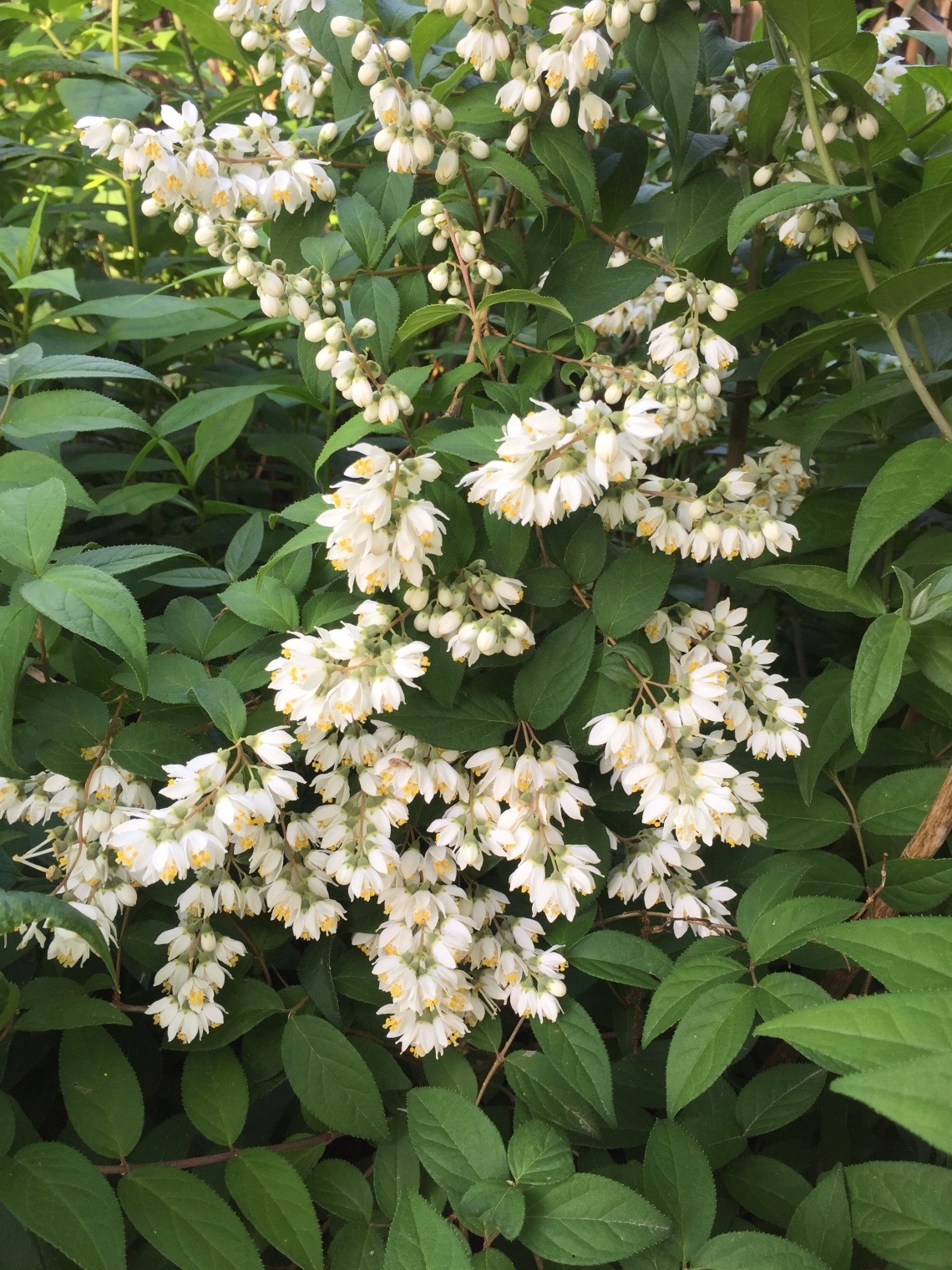
Felder said, “Correct! “fuzzy deutzia” (Deutzia scabra) is a great old “passalong plant” that many gardens (including those of my horticulturist great grandmother and my grandmother) used to sport… lots of new more compact hybrids, but this old one still rocks the mid-spring… it wants to get about 10 feet tall… no pruning past July for next year’s flower buds to form.”
If you EVER need a plant identified, Felder is your man! And his public radio show, The Gestalt Gardener, is always entertaining and educational.
Last year we replanted our “deutzia” in some beds near the house from a plant we banished down to an old vegetable garden place about 100 yards away from the house from the front yard years ago when we had our stormhouse demolished. Apparently it is SO GLAD to be back in the garden! I planted several sprouts, and now they are all well on their way to 10 feet tall!
Some of my other favorites are my “naked ladies” which grow strappy leaves in the spring, and then, all of a sudden, sprout up pink lilies in mid summer. Named for their habit of popping up in the garden as leafless stalks, naked ladies (Lycoris squamigera) stand about 2 feet tall and open whorls of lavender-pink trumpets in late summer. Folks also call them magic lilies and surprise lilies, because they emerge overnight without warning, usually following a good rain. (Southern Living)
I’ll post pics in August of the many I got from my fellow quilter, the late Norma Grissom, of Farmington, near Corinth. Plus, so much fun saying, “Look at my naked ladies!”
My favorite flower of all time is hydrangeas, and I’ve never passed up an opportunity to dig someone’s up and put them in my yard! The ones in the first image in this post are from the yard of an older couple who were dear friends to me when I first married, and who loved my babies to come visit. Leon and Ruth were married late in life and never had children of their own, but loved babies. I can still hear her saying, “Hey, Tootems!” and poking baby Mary (now 25) in the tummy to make her laugh. They never learned to drive, and I remember what an inconceivable concept that was to me as a young wife! Leon served in WWII with an “Indian” from Oklahoma – a story he told me (I grew up in Oklahoma) each and every time I visited with them over the years. Like many from the family I married into, his war years were nearly the only time he ever spent off his own farm, and as such, were the source of many oft-repeated stories we heard each time we visited.
After they got older, they moved into a nursing home, and when they died, they left their homeplace to our church. Before the church demolished the crumbling home, Kirby took me up there, and we salvaged all the hydrangeas we could. They have done well, and I feel like we have kept a bit of Leon and Ruth alive through them. I can hear her saying “hydrangEEE,” every time I walk by.
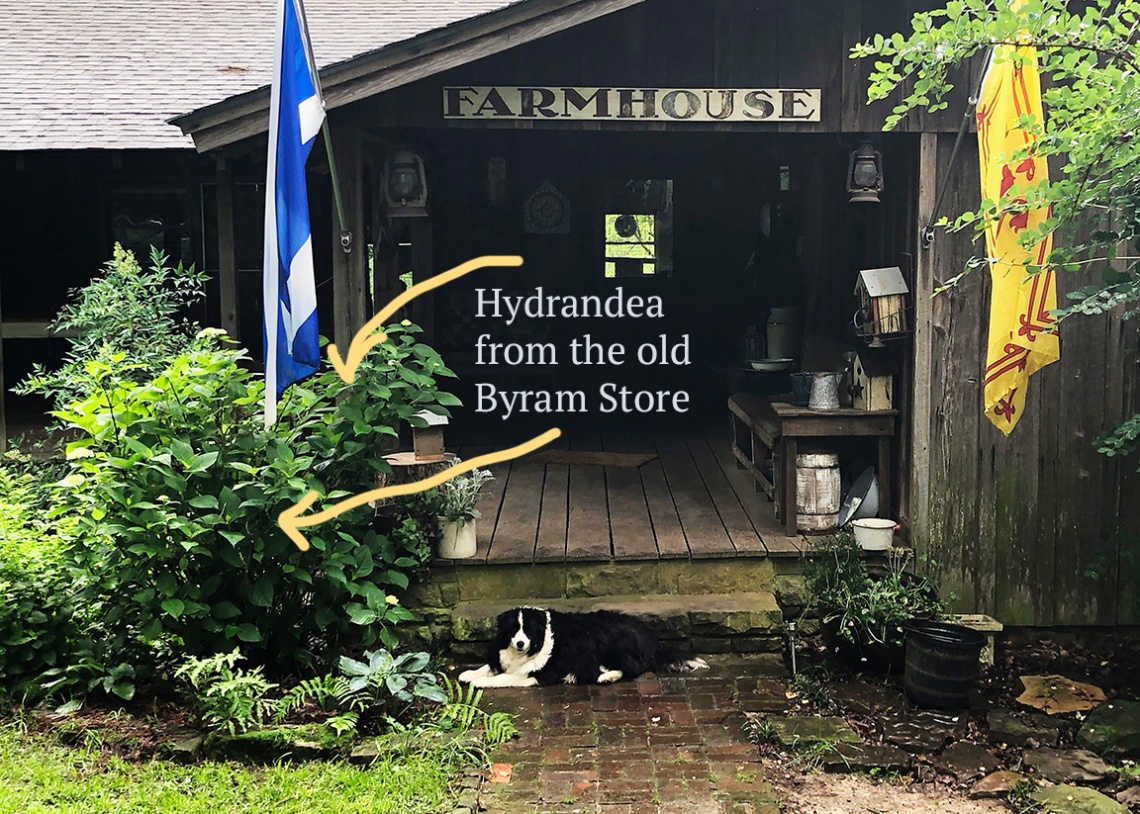
Other hydrangeas I have are from the front of the “old Byram store” on Main Street in Tishomingo. “Cousin” David Rushing, a deacon at our church, promised me he would try to get me some of the six-foot-in-diameter hydrangea bushes that lived outside the old store for decades, and sure enough, when I came home, I saw someone had dug them up with a backhoe and plopped the whole big rootball and plant in my front driveway! I think I split it up into three different plants! It had decades of Coke cans and garbage down among the branches.
